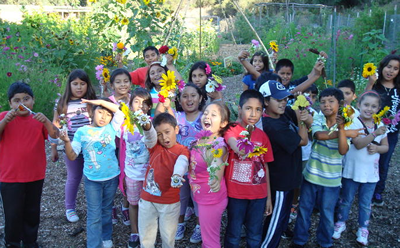The Harvard Family Research Project separated from the Harvard Graduate School of Education to become the Global Family Research Project as of January 1, 2017. It is no longer affiliated with Harvard University.
|
A Human-Centered Approach to Family EngagementHarvard Family Research Project
|
Article Information
- Full Text (HTML)
Learn More!
IDEO is a global design firm that takes a human-centered design-based approach to help organizations innovate and grow.
Tim Brown and Jocelyn Wyatt write about design thinking as a way of developing better solutions to social problems.
Stanford University’s Design Thinking Action Lab offers a crash course on the design-thinking approach.
Harvard Family Research Project examines the application of design thinking principles in family and community engagement.
Although years of research confirm the important role of families in student achievement, we continue to struggle with HOW to engage families in meaningful and effective ways. Human-centered design (also called design thinking) opens new possibilities for closing the gap between research and practice. Based on observation, optimism, collaboration, and experimentation, this approach can guide educators to explore new and better ways to motivate and sustain family engagement in children’s learning.
A “human-centered” approach focuses on developing empathy and putting oneself in another’s place, imagining what that person feels and experiences. For those seeking to engage families, this approach might prompt several questions: What do parents and family members see, hear, and feel when they enter an early childhood program, school, or afterschool program? How do teachers see parents? What do they hear from and feel about parents?
Ten years ago—before we had heard of human-centered design—Harvard Family Research Project wrote a case study about family engagement in an elementary school attended primarily by Latino children. Rereading the case now, we see that it is a good example of what this approach has to offer. Back then, in San Rafael, California, the nonprofit Parent Services Project connected with San Pedro Elementary School1 to train a core group of parents to assume leadership roles in the school and in their children’s education. Through bagel breakfasts, Tuesday coffee breaks, and potluck dinners, the parents bonded and felt inspired to extend their sense of community and advocacy on school issues with a wider group of parents. The task was a huge challenge given transportation difficulties in getting to the school and parents’ work schedules.
Taking on the role of designers, the parents created a children’s weekend soccer tournament and spread the word informally in the community, meeting families at gathering places such as bus stops and laundromats. The result: 250 families turned up for the soccer tournament without a single flier (the common type of school communication) being printed. The event provided an opportunity for parents to have a conversation with the principal and teachers that eventually led the fathers to bulldoze a field on the school property for a vegetable garden. Using the garden, students participated in hands-on science and nutrition projects while also producing healthy meals. The soccer tournament has since become a parent-run afterschool program, family engagement is formalized through the parent associations, and the vegetable garden continues to be a source of experiential learning.
 A human-centered approach pulls rather than pushes families to school. By observing and listening to families, understanding where they are ready to invest their time, and giving them the opportunity to lead, schools and other educational entities can, as our example shows, create the conditions that facilitate engagement. As these organizations seek to address equity issues, human-centered design has the potential to create opportunities that pull families that are traditionally left out.
A human-centered approach pulls rather than pushes families to school. By observing and listening to families, understanding where they are ready to invest their time, and giving them the opportunity to lead, schools and other educational entities can, as our example shows, create the conditions that facilitate engagement. As these organizations seek to address equity issues, human-centered design has the potential to create opportunities that pull families that are traditionally left out.
A human-centered approach puts people ahead of programs. All too often schools and youth-serving organizations look for a magic wand or tap into well-established program models. While it is necessary for educators to think broadly and understand the research and evidence base for family engagement models, they also must immerse themselves in the lives of the families in their communities. Only after educators know families’ hopes for their children, their interests and needs, and the barriers to and opportunities for engagement will they be in a position to design meaningful family engagement practices.
1 In the 2009‒10 academic year, the school had a 96% Latino student population, and 55% of the students were eligible for the federal free-lunch program.
Discover more on Human-Centered Design!

